Katsura Tree (Cercidiphyllum Japonicum) Profile
Written by Iris
Jan 29 2023
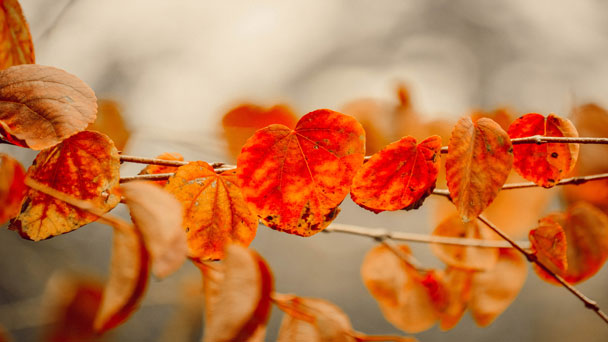
When young, Katsura tree (Cercidiphyllum japonicum), native to China and Japan, is upright and pyramid-shaped, but becomes more rounded with age. Katsura tree (Cercidiphyllum japonicum) peaks at about 40 feet. For all ages, Katsura tree (Cercidiphyllum japonicum) has a light, delicate pattern of branches and leaves. The brown bark of the old tree is a little hairy. Heart-shaped, 24-inch leaves are reddish purple, turning blue-green in summer and yellow to apricot in fall.
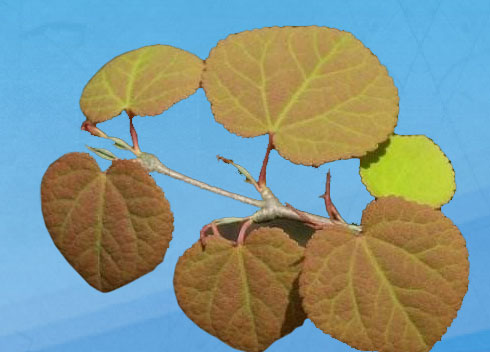
In Britain, where it is grown only for its ornamental value, it rarely reaches more than 14m (45ft) with a bushy habit as young shoots tend to be killed by severe frosts and chilly winter winds, thus restricting its growth.
The leaves of the Katsura are, if rather small, spectacular throughout the seasons. Starting out pink in the spring, the heart-shaped leaves turn to bright green in summer before various shades of yellow, orange and red take over for the autumn, often with several colours overlapping.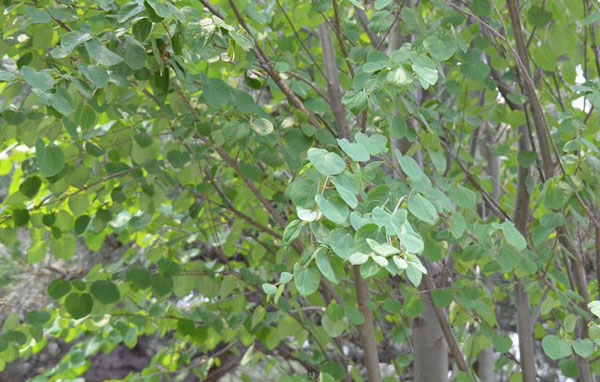
Fill 6-inch pots with a moderately moist mixture of two parts peat, two parts loam and one part perlite. Firm the mix gently, then roughen the surface with your fingertips.
Sow two Katsura tree seeds in each pot. Gently press them halfway into the surface of the peat mixture. Sprinkle a very thin layer of coarse sand around the seeds but do not bury them since they require light for germination.
Mist the sand liberally with a spray bottle to settle it. Cover each pot with a clear plastic bag. Place the covered pots inside the refrigerator for seven to ten days to chill. Keep the peat mixture barely moist on the surface.
Move the pots to a bright, sheltered area after the chilling period has ended. Choose a location with eight to ten hours of light daily, such as indoors near a large window. Do not expose the pots to direct sunlight.
Warm the pots with a propagation mat set to between 70 and 77 degrees Fahrenheit. Monitor the moisture level of the peat mixture, since the propagation mat will increase evaporation. Water whenever the mixture dries out on the surface.
Watch for germination in 10 to 20 days. Remove the clear plastic after sprouting. Remove the propagation mat in two weeks. Continue to add water whenever the surface of the peat mixture dries out.
Remove one of the Katsura tree seedlings from each pot once they reach 2 inches in height. Keep the more vigorous of the two and snip the other off at soil level using small scissors.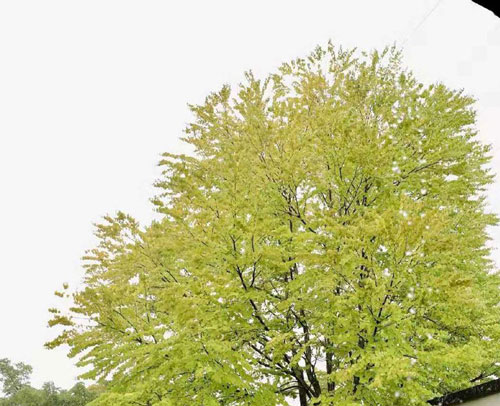
Late spring and early summer are the best times to prepare cuttings from a katsura tree.
New growth is still soft and flexible at this stage, so these are softwood cuttings.
Types of cuttings that work well with Katsuratree
Young branches of a cercidiphyllum katsura tree, perfect for cuttings.There are two ways to make cuttings from a kastura Cercidiphyllum tree. These are stem cuttings and basal cuttings.
Stem cuttings – aren’t very successful, sometimes success rates even drop down to single digits, as in one in ten. But it isn't hopeless at all, since it can also reach much higher levels if the conditions are right.
Basal cuttings – much higher success rate, but often more difficult to properly start. Indeed, these are taken from portions of a branch where stems connect. You can also use suckers that start shooting out from near the base of the trunk.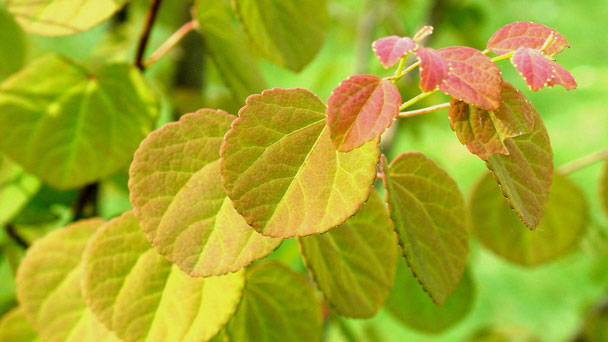
This is especially helpful for those katsura types that are weeping, like the ‘Pendula’ and the ‘Tidal Wave’.
Simply place large pots wherever branches reach to the ground. Given that sometimes branches are too short, you might need to set the pots up on a bench or stool.
Cross a branch across the top of the pot and anchor it down with a metal hoop. Make sure several leaf nodes reach into the pot. If need be, arch the branch down into the pot.
After that, fill the pot with a mix of garden soil and soil mix, heaping it all the way to cover the branch with about 4 inches of soil (10 cm).
Load the soil down with a couple larger rocks. Make sure any rain flows into the pot and not out of it, though.
In windy areas, stake the branch to make sure it doesn't rip out of the pot or tip it over.
Roots will grow from the nodes. After a year (two when the growing season is short), you can cut the mother branch away and transfer the pot.
To straighten the sapling, if horizontal, simply transfer the entire clump to a larger pot – sideways.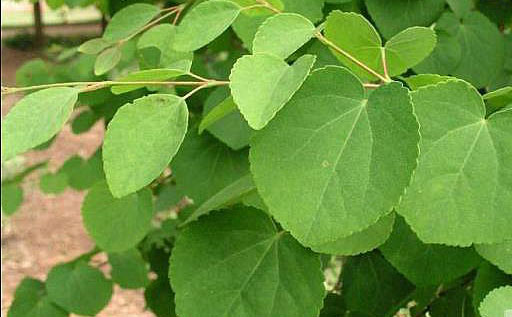
It's most important that the soil is well-drained and relatively moist. Neutral to slightly acid soil pH is best, but the katsura can tolerate somewhat more acid as well as clayey soil.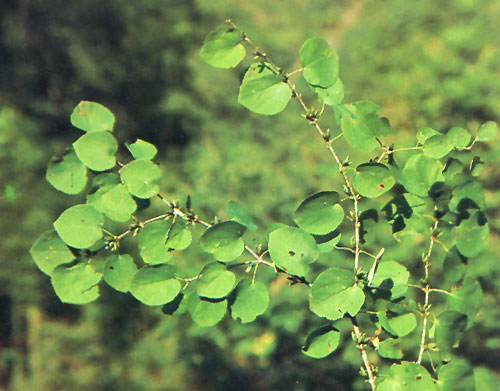
It is a superb choice for growers searching for a particular plant to set their yards apart from their neighbors. There is no need to be concerned about it being around dogs or children: Katsura trees can be poisonous to pets and people.
A Katsura tree can be used as a shade tree when a more prominent tree-like sugar maple (Acer saccharum) would be too large.
Its tidy form, attractive leaf shape, and fall color also make it suitable as a specimen. If great fall color is your primary goal, grow the Red Fox cultivar. However, the small weeping Katsura cultivar has the most beautiful form of all the Katsura trees.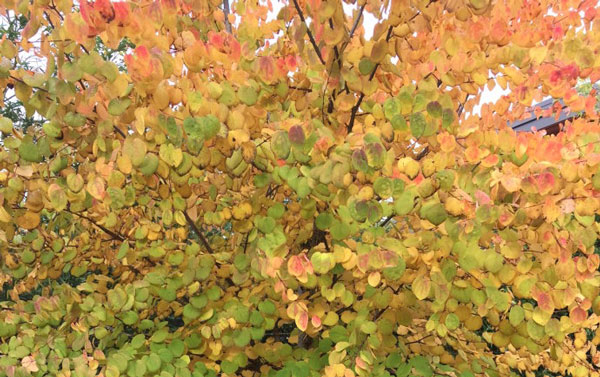
Weeping Katsura tree (Cercidiphyllum japonicum 'Pendulum'): 15 to 25 feet high, with a similar to slightly greater spread, the branches of this even smaller type droop down, increasing visual interest.
If it weren't for the lack of drought tolerance, Katsura Tree would have checked all the boxes to be Urban Approved. As long as the tree receives consistent moisture it will tolerate soil and aerial salt, as well as acidic or alkaline soil. With no diseases to speak of, it’s practically the perfect urban tree as long as it's not sited where moisture is rarely available.
The scientific name Cercidiphyllum refers to the foliage of Katsura Tree bearing a striking resemblance to the foliage of Eastern Redbud (Cercis canadensis). However, Eastern Redbud has an alternate leaf arrangement, while Katsura Tree's foliage is opposite. The specific epithet japonicum refers to the tree's native range in Japan and eastern China.
Although listed as growing at a moderate rate, Katsura Tree is capable of rapid growth spurts in optimal conditions. Some trees have been reported to grow more than 4 feet per year when given ample moisture and adequate nutrition.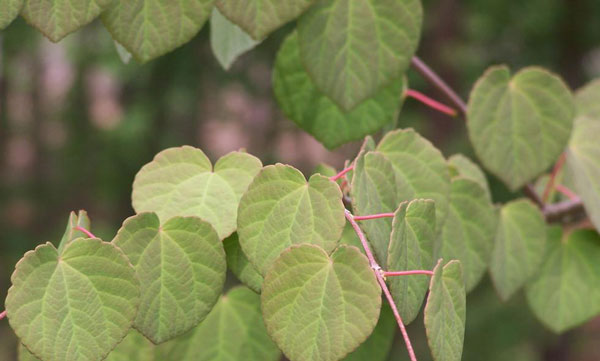
Katsura Tree PictureKatsura Tree InfoKatsura Tree Native HabitsKatsura Tree DistributionHow to Grow & Care for Katsura TreeHow to Grow Katsura TreeHow to Care for Katsura TreeKatsura Tree UsesLandscape UsesWildlife ValueKatsura Tree VarietiesKatsura Tree Common Pests/DiseasesKatsura Tree Companion Plants
Katsura Tree Picture

Katsura Tree Info
| Botanical Name | Cercidiphyllum japonicum |
| Common Name | Katsura tree, Japanese Katsura |
| Plant Type | Tree |
| Mature Size | 40 to 60 feet tall and 25 to 60 feet wide |
| Sun Exposure | Full sun to partial shade |
| Soil Type | Rich, well-drained |
| Soil pH | Neutral to slightly acidic |
| Bloom Time | March or April |
Katsura Tree Native Habits
In its native Japan and China, the Katsura tree can grow to an impressive 45m (147ft) and is one of the largest deciduous trees in Asia. Traditionally its light timber is used for furniture and interior woodwork.In Britain, where it is grown only for its ornamental value, it rarely reaches more than 14m (45ft) with a bushy habit as young shoots tend to be killed by severe frosts and chilly winter winds, thus restricting its growth.
The leaves of the Katsura are, if rather small, spectacular throughout the seasons. Starting out pink in the spring, the heart-shaped leaves turn to bright green in summer before various shades of yellow, orange and red take over for the autumn, often with several colours overlapping.
Katsura Tree Distribution
The katsura tree is native to Eastern China, mainly Japan, China, and Korea. Particularly in Japan, the tree is imbedded in folklore - some legends say that the shadow areas on the moon are the silhouette of a magic katsura tree that cannot be cut down. The tree is also linked in name with the Katsura Imperial Villa in Kyoto, whose Palace Garden contains many katsura trees, as well as a viewing platform where you can watch the moon rise. These days, the species is listed as Endangered in Asia (though classified as being Lower Risk).
How to Grow & Care for Katsura Tree
How to Grow Katsura Tree
- With Seeds
Fill 6-inch pots with a moderately moist mixture of two parts peat, two parts loam and one part perlite. Firm the mix gently, then roughen the surface with your fingertips.
Sow two Katsura tree seeds in each pot. Gently press them halfway into the surface of the peat mixture. Sprinkle a very thin layer of coarse sand around the seeds but do not bury them since they require light for germination.
Mist the sand liberally with a spray bottle to settle it. Cover each pot with a clear plastic bag. Place the covered pots inside the refrigerator for seven to ten days to chill. Keep the peat mixture barely moist on the surface.
Move the pots to a bright, sheltered area after the chilling period has ended. Choose a location with eight to ten hours of light daily, such as indoors near a large window. Do not expose the pots to direct sunlight.
Warm the pots with a propagation mat set to between 70 and 77 degrees Fahrenheit. Monitor the moisture level of the peat mixture, since the propagation mat will increase evaporation. Water whenever the mixture dries out on the surface.
Watch for germination in 10 to 20 days. Remove the clear plastic after sprouting. Remove the propagation mat in two weeks. Continue to add water whenever the surface of the peat mixture dries out.
Remove one of the Katsura tree seedlings from each pot once they reach 2 inches in height. Keep the more vigorous of the two and snip the other off at soil level using small scissors.

- With Cuttings
Late spring and early summer are the best times to prepare cuttings from a katsura tree.
New growth is still soft and flexible at this stage, so these are softwood cuttings.
Types of cuttings that work well with Katsuratree
Young branches of a cercidiphyllum katsura tree, perfect for cuttings.There are two ways to make cuttings from a kastura Cercidiphyllum tree. These are stem cuttings and basal cuttings.
Stem cuttings – aren’t very successful, sometimes success rates even drop down to single digits, as in one in ten. But it isn't hopeless at all, since it can also reach much higher levels if the conditions are right.
Basal cuttings – much higher success rate, but often more difficult to properly start. Indeed, these are taken from portions of a branch where stems connect. You can also use suckers that start shooting out from near the base of the trunk.

- With Layers
This is especially helpful for those katsura types that are weeping, like the ‘Pendula’ and the ‘Tidal Wave’.
Simply place large pots wherever branches reach to the ground. Given that sometimes branches are too short, you might need to set the pots up on a bench or stool.
Cross a branch across the top of the pot and anchor it down with a metal hoop. Make sure several leaf nodes reach into the pot. If need be, arch the branch down into the pot.
After that, fill the pot with a mix of garden soil and soil mix, heaping it all the way to cover the branch with about 4 inches of soil (10 cm).
Load the soil down with a couple larger rocks. Make sure any rain flows into the pot and not out of it, though.
In windy areas, stake the branch to make sure it doesn't rip out of the pot or tip it over.
Roots will grow from the nodes. After a year (two when the growing season is short), you can cut the mother branch away and transfer the pot.
To straighten the sapling, if horizontal, simply transfer the entire clump to a larger pot – sideways.

How to Care for Katsura Tree
- Light
It's most important that the soil is well-drained and relatively moist. Neutral to slightly acid soil pH is best, but the katsura can tolerate somewhat more acid as well as clayey soil.
- Water
- Temperature and Humidity
- Fertilizer
- Pruning

Katsura Tree Uses
Landscape Uses
Although the Katsura tree can be found in many parts of the Orient, it is less well-known in North America. This is a shame because the Katsura tree has some unique features that make it valuable.It is a superb choice for growers searching for a particular plant to set their yards apart from their neighbors. There is no need to be concerned about it being around dogs or children: Katsura trees can be poisonous to pets and people.
A Katsura tree can be used as a shade tree when a more prominent tree-like sugar maple (Acer saccharum) would be too large.
Its tidy form, attractive leaf shape, and fall color also make it suitable as a specimen. If great fall color is your primary goal, grow the Red Fox cultivar. However, the small weeping Katsura cultivar has the most beautiful form of all the Katsura trees.
Wildlife Value
Katsura Tree likely provides habitat for birds, but it is not a necessary tree for our native wildlife.
Katsura Tree Varieties
Red Fox Katsura tree (Cercidiphyllum japonicum 'Rotfuchs'): Smaller than the species tree (30 feet tall, with a spread of 16 feet), it is one of the most colorful types, bearing purplish-bronze leaves in spring, greenish-bronze leaves in summer, and orangey-bronze fall foliage.Weeping Katsura tree (Cercidiphyllum japonicum 'Pendulum'): 15 to 25 feet high, with a similar to slightly greater spread, the branches of this even smaller type droop down, increasing visual interest.
Katsura Tree Common Pests/Diseases
Sun scald and frost-cracking can be problematic in dry, hot, and/or windy sites, although Katsura Tree has no major insect or disease issues to speak of. Siting Katsura Tree properly is the most important step of ensuring a healthy, thriving landscape plant. (Also Read: Common Problems of Katsura Tree)If it weren't for the lack of drought tolerance, Katsura Tree would have checked all the boxes to be Urban Approved. As long as the tree receives consistent moisture it will tolerate soil and aerial salt, as well as acidic or alkaline soil. With no diseases to speak of, it’s practically the perfect urban tree as long as it's not sited where moisture is rarely available.
The scientific name Cercidiphyllum refers to the foliage of Katsura Tree bearing a striking resemblance to the foliage of Eastern Redbud (Cercis canadensis). However, Eastern Redbud has an alternate leaf arrangement, while Katsura Tree's foliage is opposite. The specific epithet japonicum refers to the tree's native range in Japan and eastern China.
Although listed as growing at a moderate rate, Katsura Tree is capable of rapid growth spurts in optimal conditions. Some trees have been reported to grow more than 4 feet per year when given ample moisture and adequate nutrition.

Katsura Tree Companion Plants
Katsura Tree should be paired with plants of similar moisture requirements. Use Hostas, Dogwoods, Buttonbush, and Ferns to contrast the texture of the tree. Avoid using dry-shade plants like Coralbells as they will not tolerate the moisture needed by the Katsura Tree.Latest Updated
- Benefits of Bugleweed - 7 Science-backed Health Benefits
- Bugleweed Dangers & Side Effects - Is It Poisonous?
- How to Plant Evergreen Trees - What You Should Know
- When to Plant Evergreens - Grow Guide for Evergreen Trees
- 12 Wonderful Evergreen Shrubs for Your Garden
- 12 Popular Evergreen Plants with Pictures for Beginners
- When And How To Prune A Lilac Bush Like a Pro
- How to Grow & Care for Lilac Vine (Hardenbergia Violacea)
- Japanese Lilac Tree (Syringa Reticulata) Care & Propagation Guide
- Shumard Oak Pros and Cons - What to Know
Popular Articles
- Winter maintenance of Antirrhinum Majus
- How to Grow Terminalia Mantaly Tree
- How to Grow and Care for Crossostephium Chinense
- How to grow Antirrhinum Majus in spring
- Peristeria Elata (Dove Orchid) Profile: Info & Care Guide
- Underwatered Snake Plant (Sansevieria Trifasciata) - Signs And How To Fix
- How to Care for Brazilian Jasmine Plant (Mandevilla Sanderi)
- How to Grow & Care for Graptopetalum Purple Delight in Summer
- Rosa Chinensis (China Rose): Plant Growing & Care Tips
- How to Care for Baby Sun Rose (Aptenia Cordifolia)